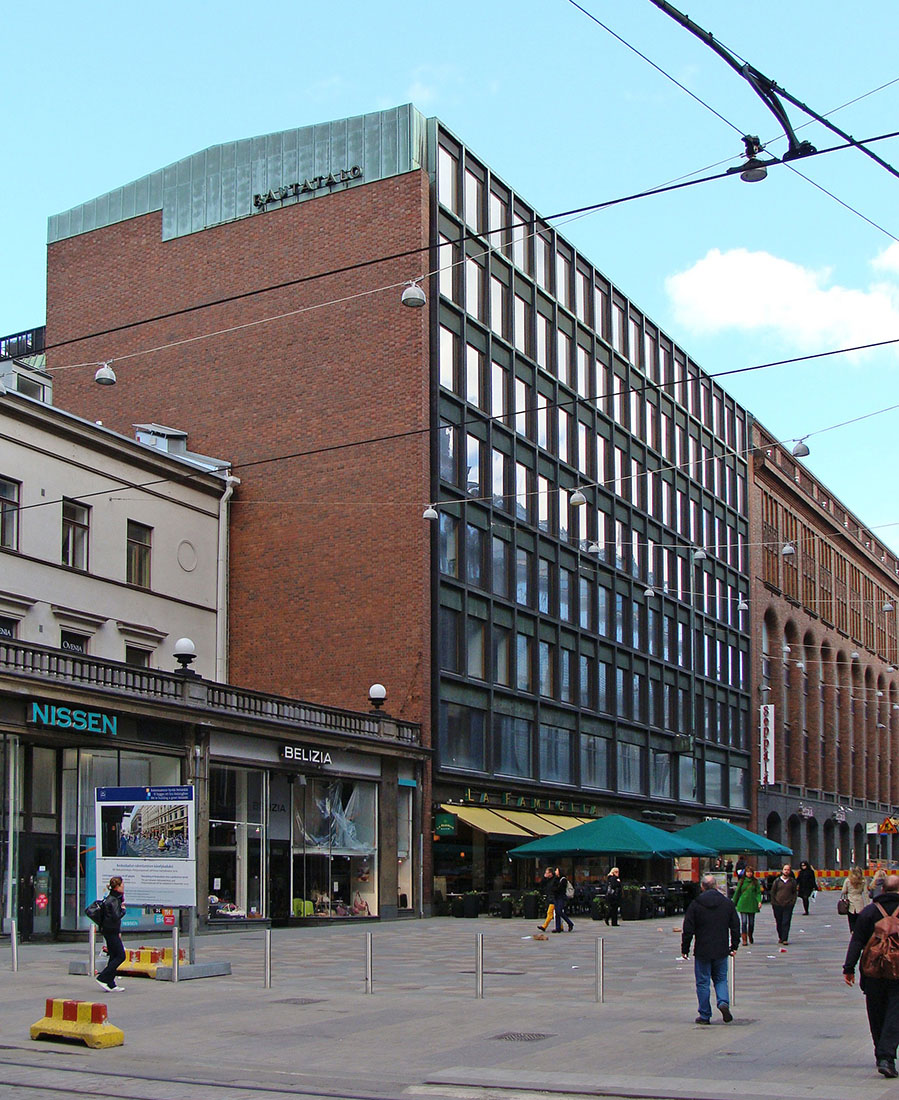 |
 |
 |
 |


Rautatalo Commercial Building
Keskuskatu 3, Helsinki
1951 - 1957
In 1951 Alvar Aalto submitted his proposal 'Casa' to the invited competition for a business building in the heart of Helsinki. The competition was announced by the Finnish hardware dealers' federation, which is the reason for its later name 'Rautatalo'. Alvar Aalto won the first prize with his proposal, which was later used as basis for the implementation in 1952 - 1957. Key characteristic of the design is a large interior light court behind an austere, copper-clad facade. The austere facade strives for harmonization with the neighbouring building, which was designed by Eliel Saarinen in 1920. These ideas made already part of the competition proposal. However, Alvar Aalto gradually had to pare away from his original vision of a Nordic counterpart to the 'Galleria' in the lombard city of Milan. The competition drawings showed a covered courtyard with barrel skylights extending from the first floor to the seventh (top) storey, with travertine-clad gallery levels suspended between them. Since the client complained about lost office space, Alvar Aalto had to revise his plans. He stubbornly insisted on three gallery levels, but had to settle for two in the end. The realized light court is considered to be one of the city's most pleasant spaces with its Alvar Aalto designed café seating 120 people, its purling little fountain and the surrounding exclusive boutiques, including also one of Aalto's own furniture company Artek. This light court is accessed from street level by a Venetian staircase between walls clad wit ceramic tiles of various colours. The regular squared facade of the building is made of copper and glass. The window axes of the two bottom floors are corresponding with the office windows of the following stories. The display windows of the mentioned bottom floors feature double width in relation to the windows above. Visible red-brick fire walls are separating the 'Rautatalo' building from its neighbours. For this building Alvar Aalto first designed the organically formed bronze door handle, later appearing in many of his designs. After the 2000's renovation, the building is mainly occupied with Nordea bank offices, with exception of the upper basement level and the first floor which are still used for shops.